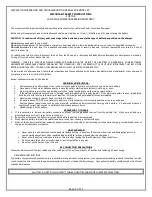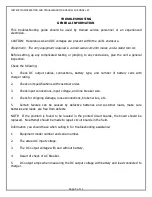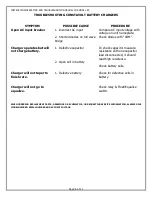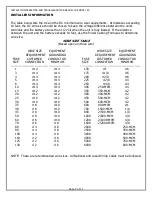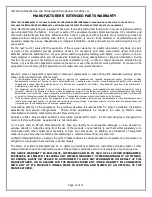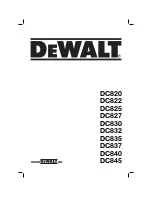
INSTRUCTION/OPERATING AND TROUBLESHOOTING MANUAL FOR MODEL EC
Page 5 of 11
TROUBLESHOOTING
GENERAL INFORMATION
This troubleshooting guide should be used by trained service personnel or an experienced
electrician.
CAUTION: Hazardous AC and DC voltages are present within the unit’s enclosure.
Equipment: The only equipment required is a multi-scale volt-ohm meter, and a stand tool kit.
Before setting up any complicated testing or jumping to any conclusions, give the unit a general
inspection.
Check the following:
1.
Check DC output cables, connections, battery type, and number of battery cells with
charger rating.
2.
Check unit specifications with customer order.
3.
Check input connections, input voltage, and line breaker size.
4.
Check for shipping damage, loose connections, broken wires, etc.
5.
Certain failures can be caused by defective batteries and customer loads, make sure
batteries and loads are free from defects.
NOTE: If the problem is found to be located in the printed circuit boards, the board should be
replaced. No attempt should be made to repair circuit boards in the field.
Information you should have when calling in for troubleshooting assistance:
1.
Equipment model number and serial number.
2.
The actual AC input voltage.
3.
The DC output voltage with and without battery.
4.
Result of check of AC Breaker.
5.
DC output amps when measuring the DC output voltage with battery and load connected to
charger.


